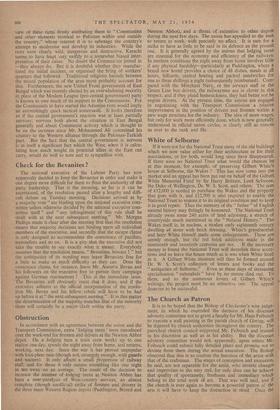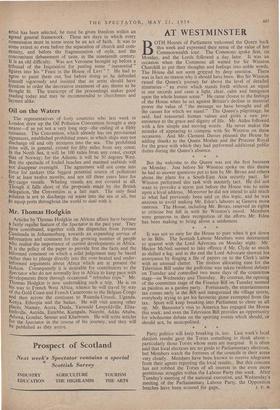The Church as Patron
It is to be hoped that the Bishop of Chichester's wise judge- ment, in which he overruled the decision of his diocesan advisory committee not to grant a faculty for Mr. Hans Feibusch to execute a wall painting in the parish church of Goring, will be digested by church authorities throughout the country. The parochial church council supported Mr. Feibusch and trusted in his discretion as well as in his ability. But the diocesan advisory committee would not, apparently, agree unless Mr. Feibusch could submit fully detailed plans and promise not to deviate from them during the actual execution. The Bishop observed that this is to confuse the function of the artist with that of the craftsman. The stages of conception and execution, he said, are not separable for the artist, who invents changes and improvises to the very end, for only thus can he achieve that quality of spontaneity, freshness and immediacy which belong to the total work of art. That was well said, and if the church is ever again to become a powerful patron of the arts it will have to keep the distinction in niind. Once the artist has been selected, he must be given freedom within an agreed general framework. These are days in which every commission must in some sense be an act of faith. It was to some extent so even before the separation of church and com- munity, and before the fragmentation of style, and the concomitant debasement of taste, in the nineteenth century. It is an old difficulty. Was not Veronese brought up before a tribunal of the Inquisition for putting some " inessential " figures into his " Feast in the House, of Levi " ? He had to agree to paint them out, 'but before doing so he defended himself vigorously and insisted that an artist should have freedom to order the decorative treatment of any theme as he thought fit. The transcript of the proceedings makes good reading today and may be recommended to churchmen and laymen alike.



































 Previous page
Previous page